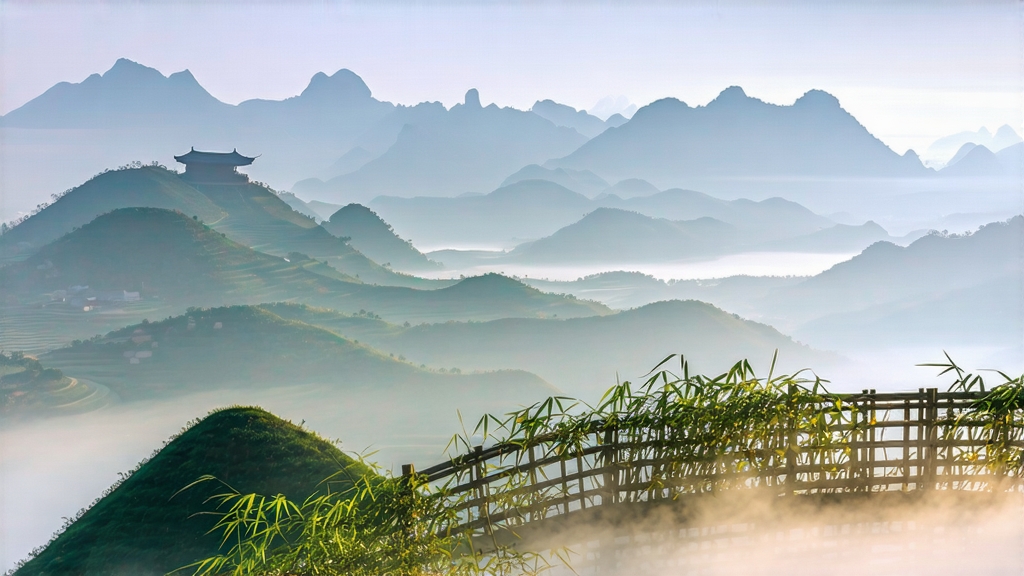
Tucked away in the cloud-veiled ridges of Ya’an, Sichuan, Mengding Huangya has been whispering its golden secret for twelve centuries. Foreign drinkers often greet yellow tea with blank stares—too rare, too subtle, too easily confused with green—yet once the story of this “imperial yellow bud” is told, the cup becomes a time capsule of Chinese refinement. From Tang-dynasty Buddhist monks to Song-era emperors, from Ming caravan trails to the quiet renaissance of today’s small-batch makers, Mengding Huangya carries the soul of a mountain and the patience of a culture that once believed only the slowest crafts were fit for heaven.
History: A Bud Reserved for Heaven
Legend places the first plucking in 724 CE, when the Chan master Wu Lizhen planted seven tea bushes on the summit of Mengding Mountain, an area Taoists revered as the “Celestial Paradise West of the World.” Tang court annals already list “Mengding Stone Flower” as tribute; by the Song period the buds were wrapped in silver foil, escorted by mounted couriers, and presented to the emperor with the same protocol used for jade seals. The Qing imperial household consumed it sparingly—only the yellowed tips were deemed gentle enough for the infant emperor’s first tea ceremony. When the last imperial gardens fell in 1911, the cultivar survived in tiny family plots, its craft passed mouth-to-ear like a secret sutra. Not until 1959 did the state re-launch Mengding Huangya as a national gift tea, yet even now annual production hovers below three metric tons, most of it pre-sold to collectors before the spring equinox.
Terroir: Where Clouds Polish the Leaf
Mengding Mountain rises abruptly from the Sichuan basin to 1 456 m, trapping monsoon mist that condenses into a perpetual drip. The classic Huangya gardens sit between 800 m and 1 200 m on Devonian sandstone laced with quartz; drainage is so sharp that roots plunge two metres in search of water, concentrating amino acids. Day-night temperature swings of 10 °C slow photosynthesis, coaxing a meadow-sweet fragrance unique among yellow teas. The fog scatters sunlight into a soft silver glow, prompting the bush to synthesize more chlorophyll-b and less tannin—hence the later, mellow yellow liquor impossible to replicate at lower elevations.
Cultivar and Plucking Calendar
Only the local micro-clone “Mengding #9” is considered authentic. Its leaves are spatula-shaped, slightly downy, and unusually thick; the bud-to-first-leaf ratio must reach 95 % for top grade. Plucking begins when the mountain peach just shows three petals—usually 20 March to 5 April—under the strict “five no-pick” rule: no dew, no fog, no noon sun, no purple bud, no insect bite. A seasoned picker gathers merely 600 g of fresh tips in a dawn shift; 5 kg of greenery are needed for 1 kg of finished tea, explaining its jade-like price.
Craft: The Lost Art of “Sealed Smothering”
Yellow tea’s identity rests on one verb—men, “to suffocate gently.” After a brief outdoor withering of 30 minutes, the buds are wok-fired at 160 °C for three minutes to kill green enzymes, but the pan master leaves 15 % residual moisture, far more than green tea. Immediately the hot leaf is piled in linen sacks and slid into a pine-wood chest; the core temperature is kept at 38 °C for 70 minutes, during which polyphenols oxidise just enough to tint the liquor sunrise-yellow without crossing into black tea territory. This cycle—roast, pile, rest—is repeated three times over 36 hours, each repetition deepening the chestnut-sweet note. Finally the leaf is slow-dried over charcoal embers covered with bamboo ash, a method borrowed from Sichuanese medicine herb dryers; the ash buffers the heat, allowing the final moisture to leave grain by grain. When done correctly, the bud still sports a pale jade coat, but snap it and you hear the glassy crack of less than 5 % moisture.
Grades and Styles
Mengding Huangya is classified into three ascending grades:
• Huangya Grade III: one bud and one leaf, 30 % broken, liquor light primrose.
• Huangya Grade II: single bud